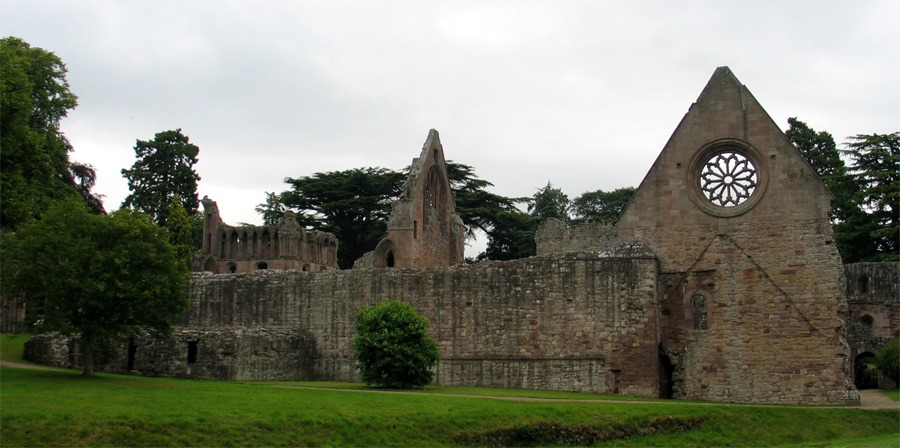 It is believed that the loop in the River Tweed occupied by Dryburgh Abbey was first settled by the early Christian missionary, St. Modan, around 600 A.D. Dryburgh Abbey, the ruins of which may be seen today, dates back to 1150 when it was founded by Hugo de Morville, Constable of Scotland, who brought a community from Alnwick in Northumberland.
The monastery was burnt to the ground by Edward II, who encamped in the grounds when retreating from Scotland in 1322. It was restored under Robert I.
An object of interest to visitors is the tomb of Sir Walter Scott located in St. Mary's Aisle (part of the north transept). Sir Walter's maternal ancestors, the Haliburtons, at one time owned Dryburgh. His wife and eldest son are also interred at Dryburgh.
About Dryburgh It is believed that the loop in the River Tweed occupied by Dryburgh Abbey was first settled by the early Christian missionary, St. Modan, around 600 A.D. Dryburgh Abbey, the ruins of which may be seen today, dates back to 1150 when it was founded by Hugo de Morville, Constable of Scotland, who brought a community from Alnwick in Northumberland.
The monastery was burnt to the ground by Edward II, who encamped in the grounds when retreating from Scotland in 1322. It was restored under Robert I.
An object of interest to visitors is the tomb of Sir Walter Scott located in St. Mary's Aisle (part of the north transept). Sir Walter's maternal ancestors, the Haliburtons, at one time owned Dryburgh. His wife and eldest son are also interred at Dryburgh.
About Dryburgh
Historic Scotland: Dryburgh Abbey
Undiscovered Scotland: Dryburgh
Wikipedia: Dryburgh Abbey
New Advent Catholic Encyclopedia: Dryburgh Abbey
Wikipedia: Saint Modan
Wikipedia: Premonstratensians
Journey to Dryburgh
Dryburgh Abbey, surrounded on three sides by a loop in the River Tweed, is located approximately eight miles south of Melrose off the B6356 in the Scottish Borders region of Scotland,
Streetmap UK (NGR NT5905831683)
Visitors Information
Visitors information may be found at the Historic Scotland Dryburgh Abbey website. General tourist information may be found on the Scottish Borders website.
Additional Photos of Dryburgh
Descriptive Sign at Dryburgh Abbey
Ruins of North and South Transepts, Dryburgh Abbey
North Transept, Dryburgh Abbey
Warming House, Dryburgh Abbey
Interior of Chapter House, Dryburgh Abbey
Vaulted Ceiling in Chapter House, Dryburgh Abbey
Exterior of Refectory with Rose Window, Dryburgh Abbey
Interior of Refectory with Rose Window, Dryburgh Abbey
The Refectory's Rose Window, Dryburgh Abbey
The Tomb of Sir Walter Scott, Dryburgh Abbey
View of Dryburgh Abbey
|



